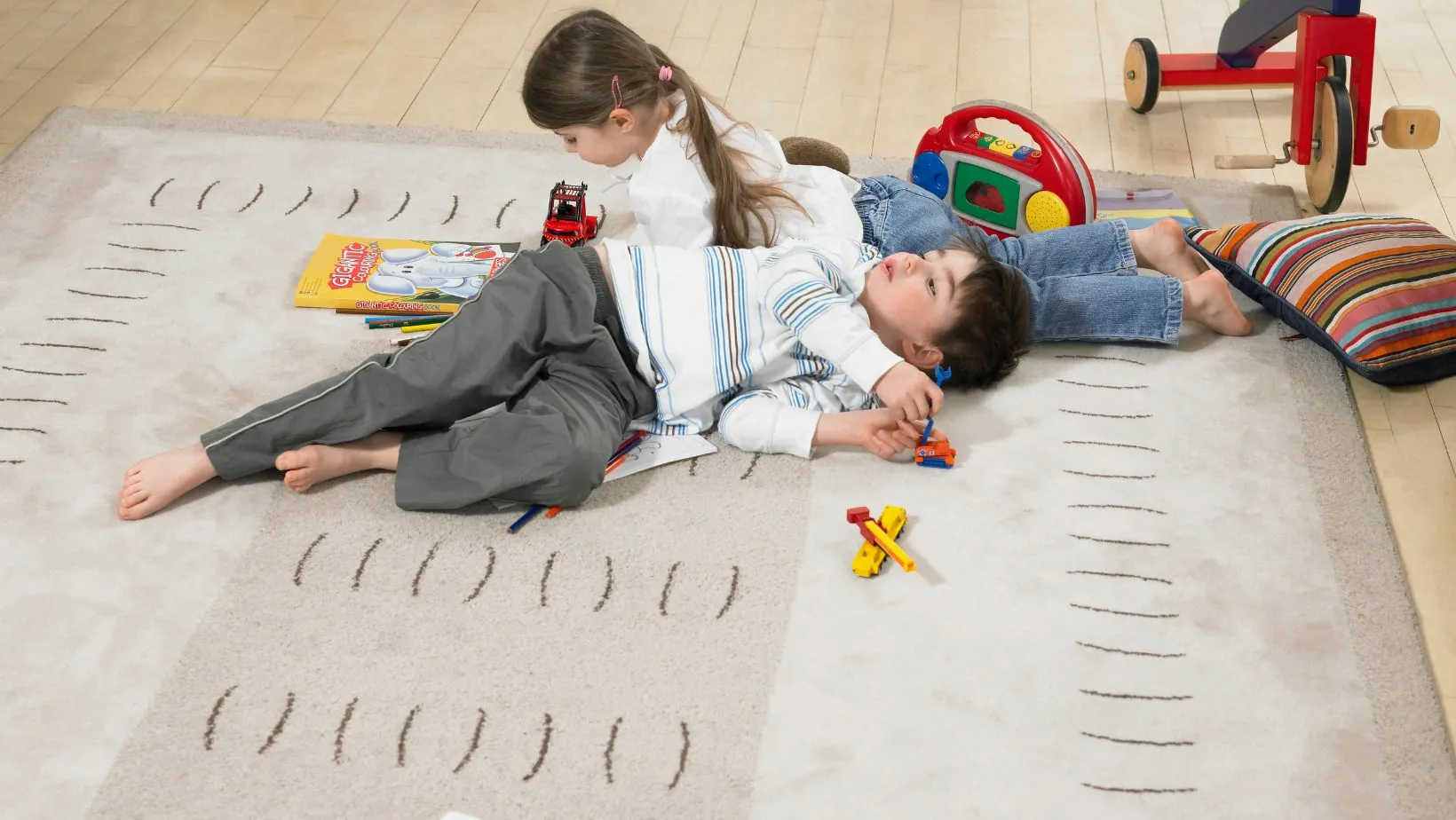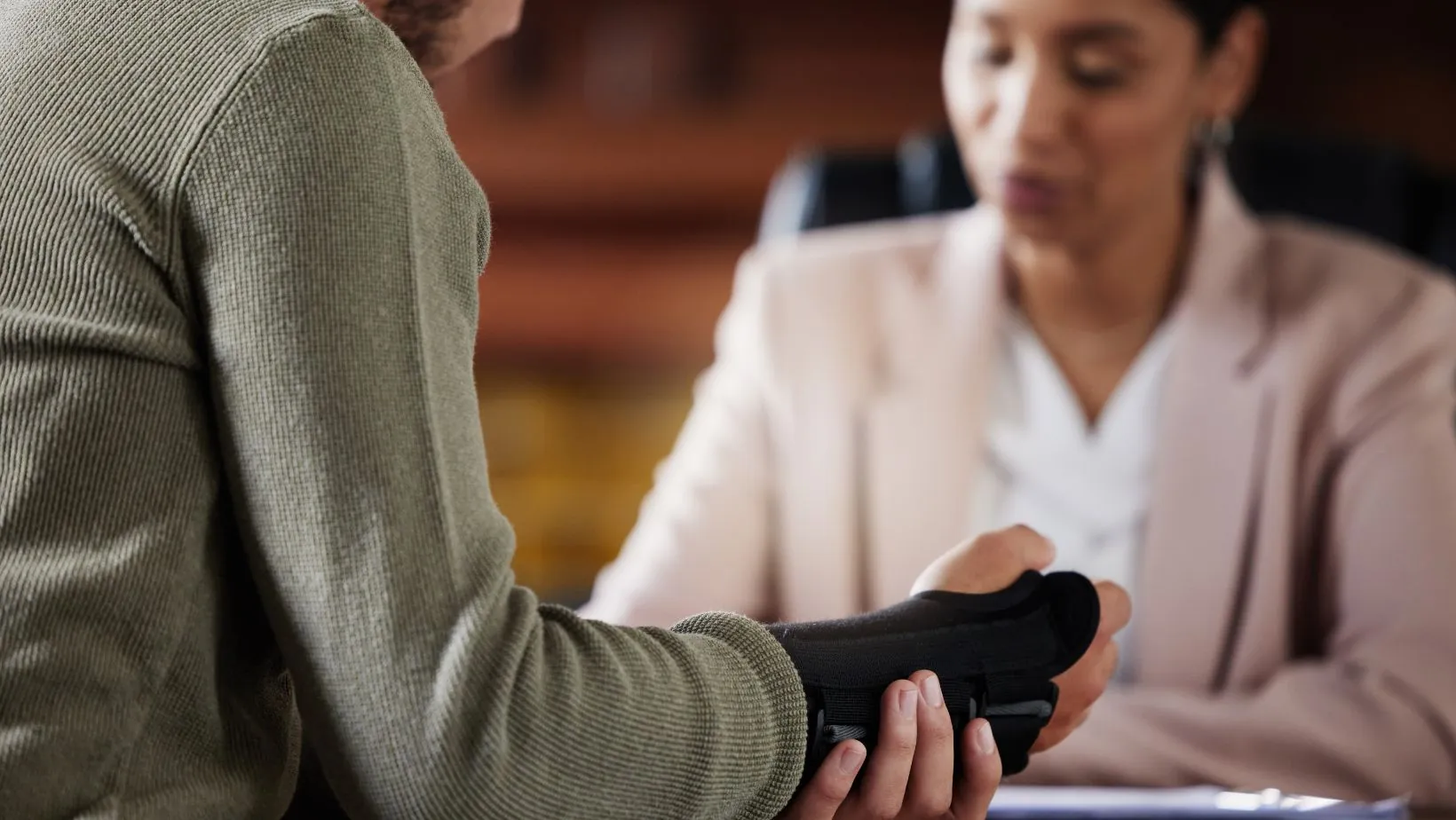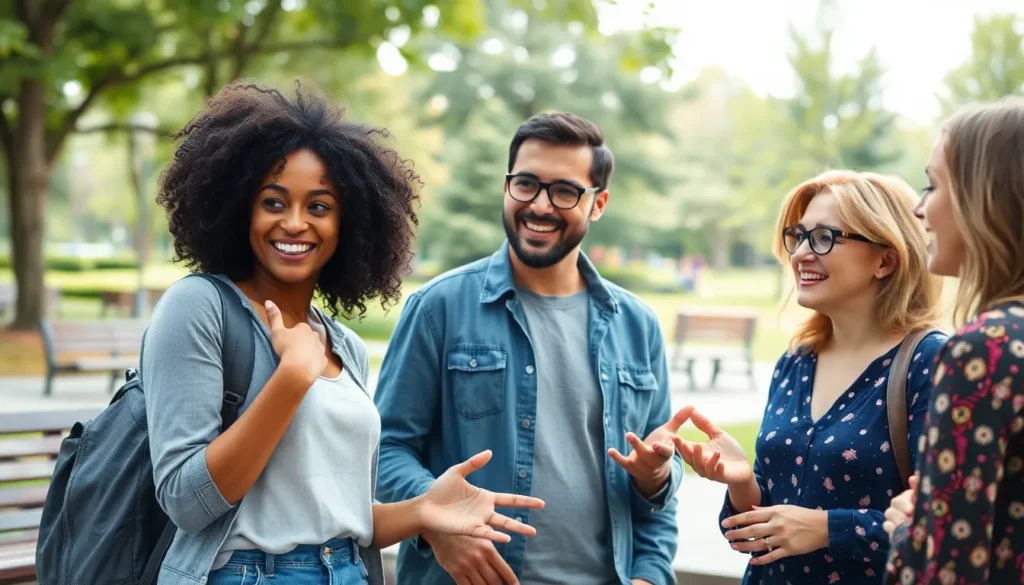Table of Contents
ToggleIn today’s fast-paced world, social conversation skills are more essential than ever. Whether in personal relationships or professional settings, the ability to engage in meaningful dialogue can create connections and foster understanding. Mastering these skills not only enhances communication but also boosts confidence in social interactions.
Effective conversation goes beyond mere small talk. It involves active listening, empathy, and the art of asking the right questions. By honing these skills, individuals can navigate social situations with ease, making them feel more comfortable and engaged. This article delves into the key components of social conversation skills and offers practical tips for anyone looking to improve their conversational prowess.
Understanding Social Conversation Skills
Social conversation skills encompass the ability to engage in meaningful exchanges with others. These skills play a vital role in building relationships and enhancing personal and professional interactions.
Definition and Importance
Social conversation skills refer to the abilities that enable individuals to communicate effectively in various contexts. These skills include verbal and nonverbal communication, listening, and responding appropriately. Mastering these skills leads to improved relationships, increased collaboration, and greater personal satisfaction. Effective communication fosters trust and understanding, vital for successful interactions.
Key Components of Social Conversation Skills
- Active Listening: Active listening involves fully concentrating on the speaker, understanding their message, and responding thoughtfully. It ensures that the speaker feels valued and understood.
- Empathy: Empathy means recognizing and respecting others’ emotions and perspectives. Demonstrating empathy enhances connection and rapport in conversations.
- Questioning Techniques: Asking open-ended questions encourages deeper discussions and helps gather more information. Questions like “What do you think about…?” invite others to share their thoughts.
- Body Language: Nonverbal cues such as eye contact, facial expressions, and posture significantly influence conversational dynamics. Positive body language reinforces engagement and openness.
- Clarity and Conciseness: Clear and concise communication prevents misunderstandings. Stating thoughts directly while avoiding excessive jargon ensures the message is easily understood.
- Adaptability: Adapting conversation styles to fit different contexts and audiences is essential. Being flexible allows individuals to connect with diverse groups effectively.
Types of Social Conversations
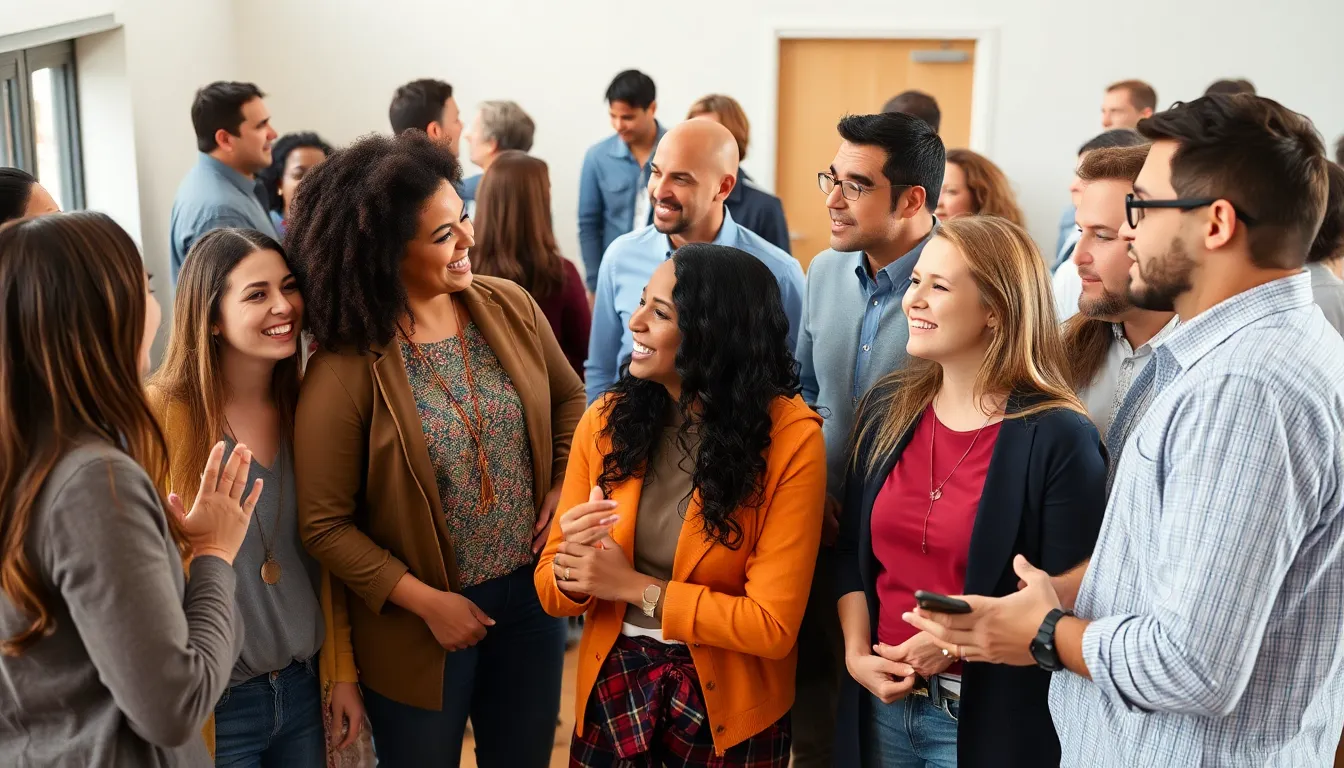
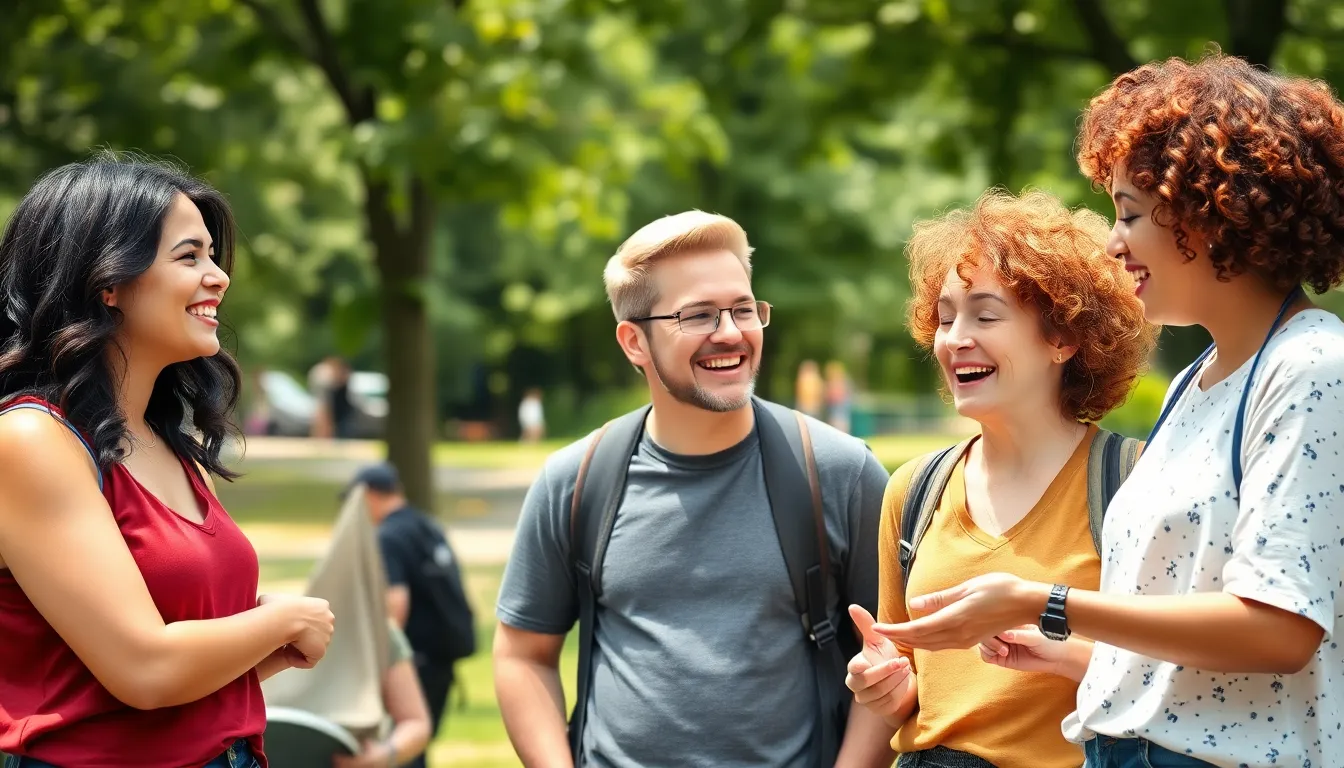
Social conversations can generally be categorized into two main types: casual and formal. Understanding these types helps individuals navigate various social situations effectively.
Casual Conversations
Casual conversations often occur in informal settings and focus on light topics. They typically include friends, family, or acquaintances. Key elements of casual conversations include:
- Open-ended questions: Encourage sharing and elaboration.
- Light humor: Adds warmth and friendliness, making the interaction enjoyable.
- Relatable topics: Discuss shared interests, such as hobbies or current events.
- Personal anecdotes: Share relatable stories that create connections.
Casual conversations foster familiarity, allowing participants to build rapport and engage comfortably.
Formal Conversations
Formal conversations happen in professional contexts or structured settings. These discussions often involve colleagues, superiors, or clients. Important aspects of formal conversations include:
- Professional language: Use clear and respectful language to convey professionalism.
- Clear objectives: Identify specific goals for the conversation, such as problem-solving or decision-making.
- Active listening: Practice attentive listening, demonstrating respect and interest.
- Appropriate body language: Maintain eye contact and open posture to promote engagement.
Formal conversations aim to convey information effectively while maintaining a professional atmosphere. Understanding the nuances of each type enhances overall communication effectiveness in varying situations.
Techniques to Improve Social Conversation Skills
Improving social conversation skills involves practical techniques that enhance communication effectiveness. Focusing on active listening and non-verbal communication creates a solid foundation for engaging interactions.
Active Listening
Active listening ensures speakers feel heard and valued. To practice active listening:
- Maintain Eye Contact: Focus on the speaker to demonstrate attention.
- Nod Occasionally: Use nodding to show understanding and encourage continuation.
- Paraphrase Key Points: Restate the speaker’s main ideas to confirm understanding.
- Ask Clarifying Questions: Pose questions that delve deeper into the topic to encourage elaboration.
- Avoid Interrupting: Let the speaker finish before responding to maintain respect and flow.
Active listening fosters a more meaningful dialogue, allowing for connections that strengthen relationships.
Non-Verbal Communication
Non-verbal communication can significantly impact conversational dynamics. To improve non-verbal skills:
- Use Positive Body Language: Face the speaker and maintain an open posture to convey receptiveness.
- Observe Facial Expressions: Use appropriate facial expressions that match the conversation’s tone.
- Respect Personal Space: Maintain a comfortable distance to ensure the speaker feels at ease.
- Utilize Gestures: Incorporate natural gestures to emphasize points and make interactions more engaging.
- Be Mindful of Tone: Adapt tone and pace to convey interest and enthusiasm.
Mastering non-verbal communication enhances overall conversational effectiveness and establishes a more inviting atmosphere.
Challenges in Developing Social Conversation Skills
Developing social conversation skills presents various challenges. Understanding these obstacles is essential for improving communication proficiency.
Common Obstacles
Individuals often face obstacles that hinder effective conversations. Awareness and acknowledgment of these barriers can facilitate growth in social interaction.
- Fear of Rejection: Many people hesitate to engage due to concerns about negative responses or judgment.
- Lack of Confidence: Low self-esteem can limit conversational participation, leading to missed connections.
- Poor Listening Skills: Difficulty in fully concentrating on others can undermine the effectiveness of discussions.
- Cultural Differences: Varied cultural norms influence expectations and behaviors in conversations, potentially causing misunderstandings.
- Information Overload: Excessive details or lengthy explanations can overwhelm both speakers and listeners, hindering clarity and engagement.
Overcoming Social Anxiety
Addressing social anxiety involves practical strategies that promote healthier interactions. Employing these techniques can lead to enhanced conversation skills.
- Preparation: Practicing conversational starters and potential topics can build confidence before entering social situations.
- Breathing Exercises: Deep breathing techniques help manage anxiety and create a calm state of mind.
- Gradual Exposure: Incrementally engaging in social settings can desensitize feelings of anxiety over time.
- Mindfulness Practices: Practicing mindfulness increases awareness of thoughts and feelings during conversations, enabling individuals to stay present.
- Positive Affirmations: Utilizing affirmations reinforces self-worth and boosts confidence in social situations.
By recognizing common obstacles and employing effective strategies, individuals pave the way for stronger social conversation skills.


